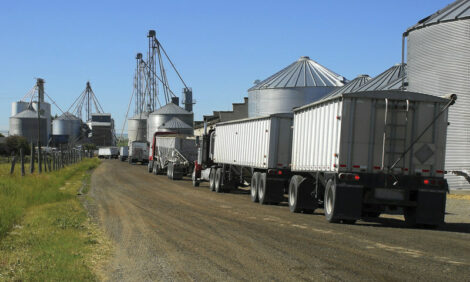



Slow Process to Rebuild Herds After Texas Droughts
US - Whilst persistent droughts have continued to affect parts of Texas beef production country, there are signs that some ranchers are beginning to rebuild herds.Agri-Life Today reports experts at the Independent Cattlemen's Association are cautious, and continue to monitor the drought situation closely.
“Some areas are still in pretty bad shape,” said Phil Sadler, association president. “Cow numbers are down due to liquidations. Having said that, on the expense side, with prudent management that will be the key to being successful.”
In the meantime, Sadler said any upward climb in overall cow numbers in Texas will not come overnight.
“It’s going to be a slow process to rebuild herds,” he said. “The numbers are not there.”
Stan Bevers, Texas A&M AgriLife Extension Service economist, said keeping records are important for profitable cattle operations. (Texas A&M AgriLife Extension Service photo by Blair Fannin) Stan Bevers, Texas A&M AgriLife Extension Service economist, discussed records and working with data at the Independent Cattlemen’s Association meeting recently. (Texas A&M AgriLife Extension Service photo by Blair Fannin)
“Guarded optimism” was what he said would best describe the outlook going forward, as more than 300 beef producers recently attended sessions at this year’s meeting in Bastrop.
Stan Bevers, Texas A&M AgriLife Extension Service economist in Vernon, told producers they need to closely monitor expenses and track performance of each cow.
“You can’t manage what you don’t measure,” he said. “The whole point of being in business is to make profit,” he said.
Bevers said while cattle prices remain strong, input costs continue to affect profit margins. He said ranchers without any goals identified for their business are setting themselves up for potential problems.
“You should make profits, then make choices,” he said.
Bevers said too many cattle producers make purchasing choices before making profit.
“When I first start working with ranches, I ask individuals if they are reaching their goals and effectively managing assets,” he said. “You need to identify what your goals are and where you are going.”
Bevers said that starts with keeping good records. However, he added producers don’t have to go out and purchase expensive software programs.
“It’s doesn’t have to be a $6,000 software program,” he said. “It could be something as simple as a spreadsheet or even on paper.”
Once a good record-keeping system is in place, valuable data is generated to aid making decisions about the operation, Bevers said.
TheCattleSite News Desk


